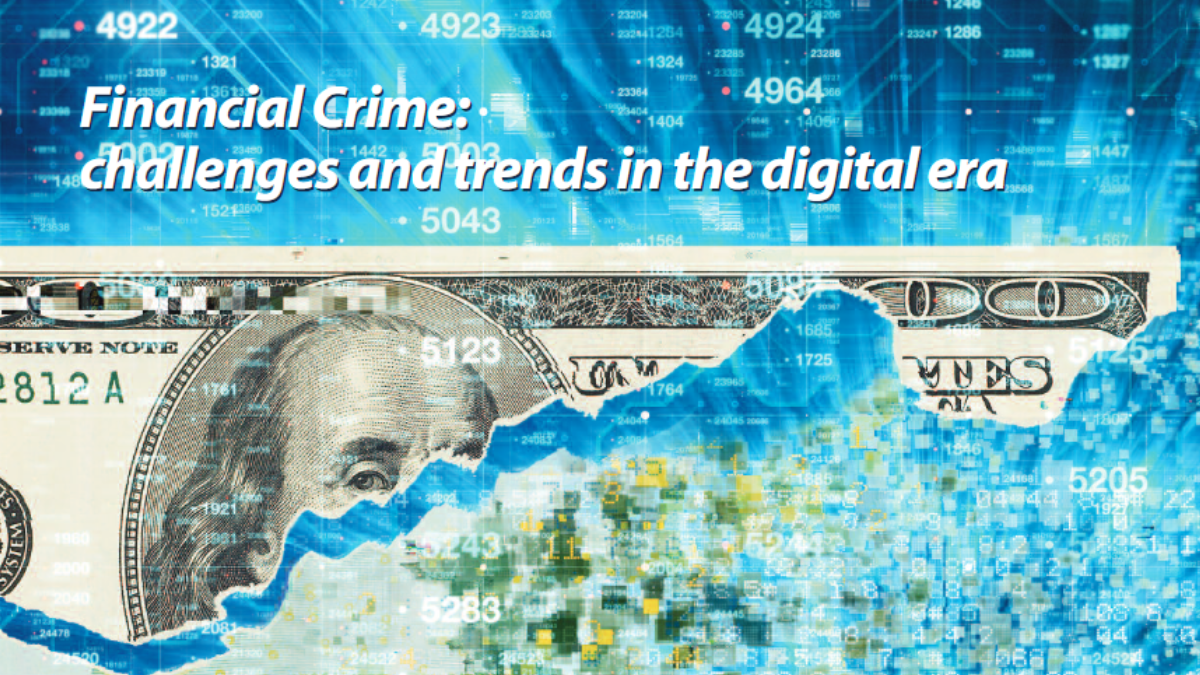Financial Crime is a general concept that comprises a set of illicit activities. Although there are differences across jurisdictions, in general terms Financial Crime includes activities such as money laundering (i.e. transforming into legal the money that comes from different illegal activities), terrorist financing, breach of economic sanctions, bribery and corruption, fraud, and market abuse.
Financial Crime and money laundering (ML) is a major threat that the financial sector faces in their risk identification, management, and control frameworks. For example, focusing on ML, the amount of money laundered globally in a year is estimated to reach between 2% and 5% of global GDP, or between $800 billion and $2 trillion in current US dollars3 . However, less than 1% of it is ever seized or frozen by law
enforcement agencies 4.
In the last years, financial institutions from many different geographies invested billions of dollars in improving their systems, people and processes to be able to tackle the increasing threat that Financial Crime poses to their stability and to their reputation. According to some industry reports, the yearly investment in Financial Crime compliance across financial institutions worldwide is estimated to be more than $200 billion5 .
Several factors make the tackling of Financial Crime increasingly challenging, including:
- An ever more global economy and corresponding interconnected financial sector, that makes it challenging to perform a full traceability of money.
- Local approach to supervision. Historically, the approach to Financial Crime, and in particular the activities of AML, has been driven by local legislators and supervisors, country-specific law enforcement authorities, and financial intelligence agencies. Despite the existence of inter governmental bodies, such as the Financial Action Task Force6 , there has been no operational platforms, nor regulatory and supervisory mechanisms for effective collaboration and information sharing.
- The progressive sophistication of the money laundering strategies, involving other types of crimes such as fraud or cybercrime (e.g. identity theft)7.
- The evolution of the payments industry towards easier, quicker and more flexible digital payments mechanisms.
- The irruption of cryptocurrencies and their ability to avoid traceability of the sources of funds8.
- The technological advances deployed as a result of the pandemic, which have forced financial institutions to reduce face-to-face interactions and substitute them by digital processes (including remote onboarding of new clients), more susceptible to digital crime that can eventually lead to
Financial Crime. - Notwithstanding, financial institutions have strong tailwinds and can reach more powerful tools to effectively fight against Financial Crime, by identifying, monitoring, measuring, and controlling these types of illicit activities, including:
- Stronger computational capacity to execute risk identification alerts and strategies in real time involving a much richer set of data points to identify sophisticated strategies.
- More advanced mathematical modelling, including ML algorithms that can run quicker and are able to refine the strategies and improve effectiveness in the detection.
- Increased awareness from the C-suite and Board of the implications of this type of crimes, which grants multi-year commitment and investment. At the same time, increased visibility of the total cost of Financial Crime (including both direct losses, and those from remediation and fines 9), as well as awareness of the ever more ‘connected’ Financial Crime risks.
- Increased collaboration intra-company, with the removal of silos and the collaboration across departments (technology, compliance, legal, money laundering prevention, sanctions, etc.) to ensure that there is full information sharing and transparency across teams in charge of Financial Crime.
- From the early work of the International Financial Task Force, and with the work of other international organizations such as the United Nations Office on Drugs and Crime, there is much more awareness around the importance of international cooperation.
Resource Sponsored By

Please fill out the form to access the content

